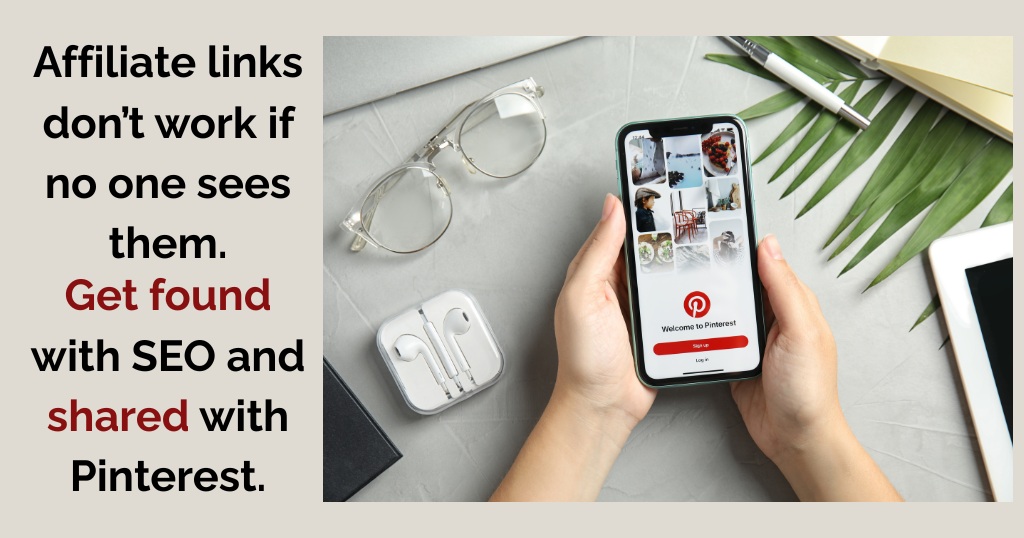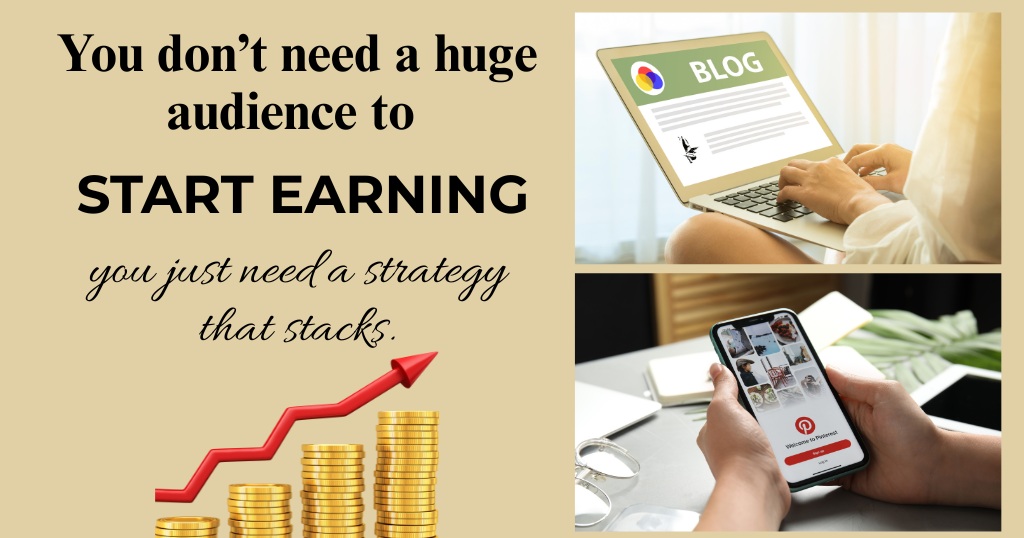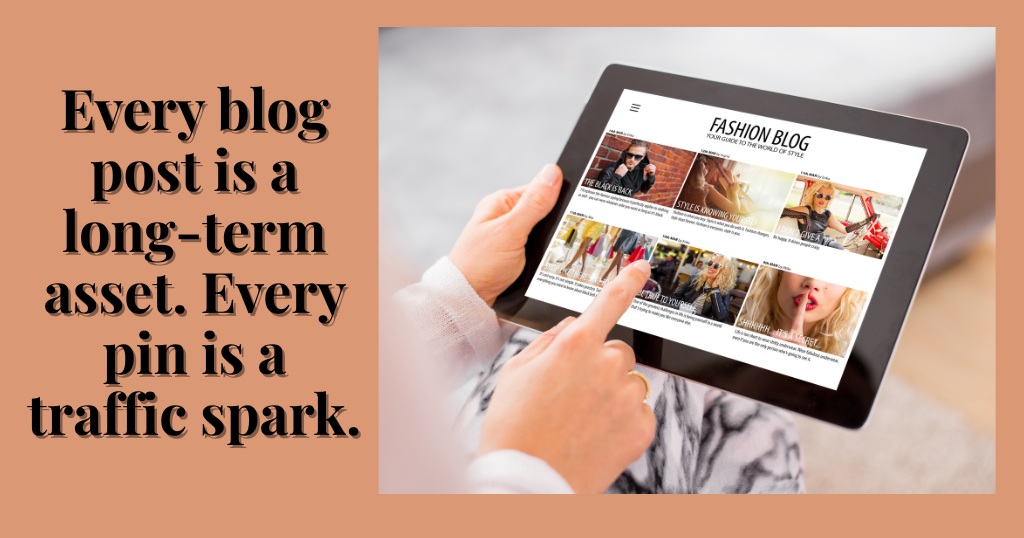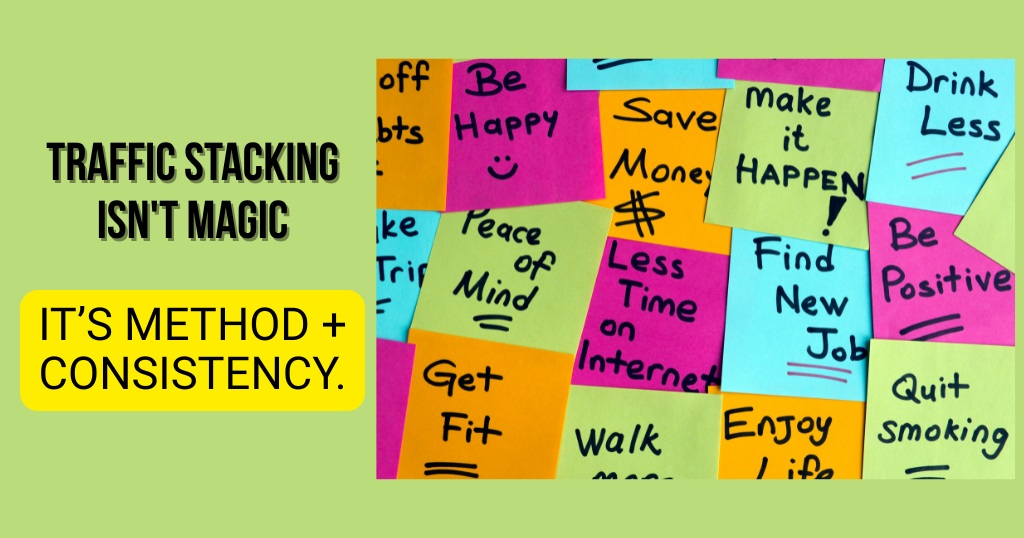How to Become an Amazon Affiliate Using a Blog + Pinterest Strategy
🎯 Why SEO Alone Isn’t Enough for Amazon Affiliate Success
I still remember the first time I signed up for the Amazon Associates affiliate program.
It was a rainy Sunday in San Marcos, Texas. I had just published a blog post about weekend road trip essentials, and I thought—why not monetize it? I grabbed a few product links, added them into my post, and waited… crickets. Not a single click for days.

At the time, I thought SEO alone would bring me traffic. I was optimizing posts, adding keywords, even using fancy tools. But what I didn’t realize? I was missing a huge piece of the puzzle: traffic stacking.
That’s when I started experimenting with Pinterest. I created a simple pin, posted it to a board about travel hacks, and within 3 days, that same blog post started getting traffic. Real clicks. Real affiliate link engagement.
Since then, I’ve layered my strategy around two reliable sources:
📌 Long-term SEO traffic from my blog
📌 Fast, free Pinterest traffic to speed things up
In this post, I’ll show you exactly how I combine blog + Pinterest to become a consistent Amazon affiliate earner. I’ll walk you through keyword research, pin design, blog structure, and how I drive traffic from two platforms—without ads or a huge following.
How can I become an Amazon affiliate using Pinterest? You can become an Amazon affiliate by signing up for the Amazon Associates program, starting a blog, and using Pinterest to drive free traffic to your blog posts. By creating SEO-optimized blog content and pinning helpful visuals that link to those posts, you can generate consistent affiliate clicks and income over time.
✨ How Pinterest Complements Your Affiliate Blog Strategy
📈 Why Pinterest + Blog = Traffic Stacking Magic
When I first started blogging, I thought SEO was the only real way to grow affiliate clicks. I’d spend hours researching keywords, optimizing titles, tweaking meta descriptions—only to wait weeks (or months) for Google to notice my post.

Pinterest changed that completely.
Pinterest isn’t just a social media platform—it’s a visual search engine. People go there with clear intentions: they’re planning, researching, or looking to buy. And that’s exactly what makes it powerful for affiliate marketing.
Here’s why Pinterest + Blogging works so well together:
- ✅ Speed: While Google SEO can take months to kick in, Pinterest can drive traffic to your blog the same week you post a new pin.
- ✅ Buyer Intent: People search for “best travel mugs” or “fall outfit ideas” with the mindset to take action—making it perfect for Amazon affiliate links.
- ✅ Longevity: A single well-optimized pin can keep bringing traffic to your blog post for months, even years.
- ✅ Content Recycling: One blog post can fuel 5–10 different pins with different angles, titles, and visuals.
For me, Pinterest became my blog’s early momentum machine. It helped me validate which blog posts were worth scaling with SEO, and which products actually converted.
Instead of waiting around for Google rankings, I started driving traffic from day one—with simple, eye-catching pins that led straight to my affiliate blog content.
🔍 Finding Buyer-Intent Keywords (Low-Hanging Fruit)
Why Keyword Strategy Matters for Both Pinterest and SEO
If you want to earn consistently with the Amazon affiliate program, the first step isn’t writing—it’s choosing the right keywords. I used to waste time creating blog posts around topics I thought people were interested in… until I realized I was targeting the wrong kind of search intent.
There are three types of intent you’ll see in both Google and Pinterest:
- Informational – “What is a travel mug?”
- Navigational – “Amazon Yeti mug”
- Transactional/Buyer Intent – “Best travel mugs for commuters”
✨ That third type—buyer intent—is your golden ticket.
💡 Here’s How I Find Buyer Keywords for My Affiliate Blog:
✅ For Blog SEO:
- I use free tools like:
- Google Autosuggest
- Ubersuggest (free version)
- SEMrush (KD < 50, Volume > 500 is my sweet spot)
- AnswerThePublic for blog topic ideas
- I look for long-tail keywords like:
- “best amazon gifts under $30”
- “comfortable boots for city walking”
- “minimalist home office must-haves”
These keywords are low-competition but high-converting.
✅ For Pinterest SEO:
- I go to the Pinterest search bar and start typing similar terms.
- Pinterest autocompletes with popular search phrases like:
- “travel must haves amazon”
- “fall fashion finds amazon”
- “affiliate marketing tools 2025”
Then I turn those into pin titles, board titles, and descriptions that align with the blog post.
🧠 Pro Tip:
If a keyword shows up in both Google and Pinterest search suggestions, that’s a strong signal it has volume + intent across platforms.
By layering Pinterest-friendly visual angles over Google-friendly written content, I get the best of both worlds: long-term SEO traffic and fast Pinterest clicks.
My Content System – Blog Post + Pin + Link Placement
The Repeatable Formula That Powers My Amazon Affiliate Clicks
Once I find a strong keyword with buyer intent, I follow a simple but effective system:
Blog → Pin → Strategic Link Placement

This system is how I went from publishing blog posts that no one read… to generating daily affiliate clicks from both Pinterest and Google.
✍️ Step 1: Write a Solution-Focused Blog Post
I structure every affiliate blog post around solving a real problem for the reader.
Instead of just listing 10 random Amazon products, I pick a theme like:
- “Fall Morning Routine Must-Haves Under $40”
- “Weekend Getaway Car Essentials Kit”
- “Self-Care Shower Routine With Amazon Finds”
Then, I write:
- A relatable introduction with a lifestyle hook (Austin mornings, road trip packing chaos, etc.)
- A detailed review of each product (why I love it, how it fits into daily life)
- A pros and cons list for EEAT trust
- Clear CTAs like “Here’s the exact product I use from Amazon”
📌 Step 2: Design Pinterest Pins for Each Blog Post
Once the post is live, I create 5–7 pins with:
- 2-line overlays (pain point + product solution)
- Keywords in the image file name and alt text
- Different angles (e.g., “travel must-haves,” “Amazon car finds,” “cozy routine hacks”)
- Use Canva and keep templates organized by blog post
I pin these to:
- Niche boards (e.g., “Amazon Car Organization,” “Fall Fashion Under $50”)
- Group boards (if relevant)
- Use Tailwind or manual pinning 2–3x/day
🔗 Step 3: Smart Affiliate Link Placement
Inside the blog, I use:
- Text-based links: “I bought this one from Amazon” (converted better than ‘click here’)
- Image links: Clicking the product image takes you straight to Amazon
- Comparison tables (even for 1 product vs generic version – people love visual shortcuts)
- Mini “Buy It If / Don’t Buy It If” boxes – to build trust
📌 I never put affiliate links directly on Pinterest. Instead, every pin links to my blog, where I fully disclose and then send readers to Amazon.
This system works like a vending machine:
- Blog = your product
- Pin = your visual ad
- Link = your money path
Once it’s set up, one good pin can keep driving traffic to one good blog post for months. And when traffic lands on your site? It’s optimized to convert.
📌 Pinterest Traffic Stacking – Daily Workflow & Tools
How I Consistently Drive Traffic With Just 15–20 Minutes a Day
One of the biggest myths about Pinterest is that you need to spend hours a day pinning manually. That’s just not true. I run my Pinterest traffic engine with a simple, low-maintenance system that brings consistent traffic back to my blog posts—and ultimately to my Amazon affiliate links.

I call it traffic stacking: using one blog post, multiple pins, and repeat exposure over time.
🔁 Here’s My Daily Pinterest Workflow:
1️⃣ Pin Creation (Weekly Batch)
- I sit down once a week and create 5–10 fresh pins per blog post.
- Each pin has a unique:
- Text overlay (e.g. “No more messy car rides”)
- Keyword-rich title (e.g. “Amazon Car Must-Haves”)
- File name with keywords (e.g. amazon-car-organizer-pinterest.jpg)
- Tool used: Canva Pro
2️⃣ Pin Scheduling
- I schedule 2–3 pins per day using:
- Tailwind (great for looping content across seasons)
- Or I manually pin if I want to test new angles live
- Each pin goes to:
- A relevant niche board
- A Pinterest Trends-based seasonal board
- Occasionally a group board with engagement
3️⃣ Traffic Tracking
- I check Pinterest analytics for outbound clicks and saves
- I monitor blog traffic with Google Analytics → Behavior → Landing Pages
- If a pin performs well, I duplicate its style and create a remix version
- Different image
- New color combo
- Slight variation in title
🧰 My Go-To Tools for Traffic Stacking:
| Tool | Purpose |
| Canva Pro | Pin templates + batch creation |
| Tailwind | Scheduling + board management |
| Keywords Everywhere | Keyword volume + Pinterest trends |
| Pinterest Trends | Seasonal keyword opportunities |
| Bitly (optional) | Tracking affiliate link clicks (use sparingly, not for Amazon links directly) |
What I love most? This system compounds over time. The more posts and pins I publish, the more traffic layers up. And since Pinterest acts like a search engine, even a 3-month-old pin can suddenly go viral again.
🔗 Where Affiliate Links Go (for Maximum Clicks & Compliance)
How to Place Amazon Links Strategically Without Breaking the Rules
If you’re using the Amazon Associates Program, you already know how strict they are. They’ll ban your account if you break the rules—even by accident.
So the goal here is to maximize clicks and commissions while staying 100% compliant. After lots of trial and error, here’s what works best for me:
✅ What You Can Do With Amazon Links:
- Place links inside your blog post
- Use links on product images
- Include comparison tables with links
- Link text naturally like:
“This is the exact travel mug I use from Amazon”
🚫 What You Cannot Do (Per Amazon’s TOS):
- Link directly to Amazon from Pinterest or any social media platform
(Instead: Link to your blog post → Then use Amazon links inside) - Use shortened links like Bitly on Amazon links (they must be trackable by Amazon)
- Show prices or star ratings unless using Amazon’s official API
- Say things like “Buy now before it’s gone!” (no false urgency)
🧠 My Best-Converting Link Placements Inside a Blog Post:
| Placement | Why It Works |
| First paragraph | Catch impulse shoppers early |
| After each product description | Keeps the flow natural |
| Product image | Readers instinctively click images |
| Mini comparison table | Visual = trust + fast decision |
| “Buy It If / Don’t Buy It If” box | Builds transparency and conversion confidence |
| Final CTA paragraph | Wrap up with a clear next step |
💡 Example (Natural Affiliate Link in Use):
I’ve tested a bunch of car trash cans, but this collapsible one from Amazon is the only one that stayed leakproof after weeks of use.
(Notice how the anchor text sounds helpful—not pushy.)
The real key? Trust. When you structure your blog like a helpful, personal recommendation (not a sales page), people are more likely to click and buy.
📊 Results So Far – Outbound Clicks, Blog Views & Earnings
The Numbers Behind My Blog + Pinterest Amazon Strategy
Let’s be honest—when you’re just starting out with Amazon affiliate marketing, it’s hard to know what “success” actually looks like.

You post the blog. You design the pin. You wait.
And then the doubts kick in: “Is this even working?”
I’ve been there.
That’s why I started tracking my traffic and clicks from day one—and I want to share the kind of results this system has given me (realistically) over time.
📈 Pinterest Traffic Growth (Last 30 Days)
- Pins posted per day: 10–15 (mix of new and recycled)
- Monthly Pinterest views: 28,000+
- Outbound link clicks: 500+
- Top-performing pin: 87 outbound clicks in 1 week (linked to a blog about Amazon car essentials)
🧠 Note: Pinterest views are vanity. Outbound clicks are what really matter.
🌐 Blog Traffic (Last 30 Days)
- Sessions from Pinterest: ~390
- Sessions from Google: ~210
- Top blog post: “Fall Morning Routine With Amazon Finds”
→ Conversion rate: ~3.8% (based on affiliate link clicks vs views)
💸 Affiliate Earnings (Last 30 Days)
- Amazon Affiliate: $62.34 (Mostly from low-ticket items like mugs, organizers, travel gear)
- Top-converting product: Yeti-style travel mug
- Average commission: $0.80–$2.30 per item
- Highest single-day earning: $8.19 (from just 3 clicks)
🔄 What’s Working Well:
- Using storytelling-style blog posts to build trust
- Designing multiple pin styles per blog to test performance
- Including affiliate links early and naturally in content
❌ What Didn’t Work:
- Relying on just 1 pin per blog post
- Over-optimizing for SEO and forgetting the human reader
- Not tracking clicks until weeks later
This isn’t a “get rich in 30 days” strategy—but it’s a realistic, scalable method that builds with time. And best of all? Most of my pins and blog posts still work for me months after posting, without touching them again.
🧠 Tips I Wish I Knew Before Starting
Lessons That Could’ve Saved Me Time, Stress—and Lost Clicks
When I started my Amazon affiliate journey, I had no clue how much of it would be trial and error. If I could go back and give myself a head start, these are the things I wish someone had told me—honestly.
💡 Tip #1: SEO Is Powerful, But It’s Slow
I expected instant results after optimizing my blog posts with keywords. Truth is, Google traffic takes weeks (sometimes months) to kick in.
Pinterest was what gave me early traction—and confidence to keep going.
💡 Tip #2: One Pin Is Never Enough
My first few blog posts had only one Pinterest pin. They flopped. Now, I create 5–7 pin variations per post with different hooks and layouts.
More pins = more chances to catch attention in the feed.
💡 Tip #3: Product Descriptions Sell—Not Just Lists
At first, I just listed product names and Amazon links. But when I started writing personal reasons why I liked a product (plus pros and cons), my click-through rate went up significantly.
Storytelling builds trust.
💡 Tip #4: Amazon Is Strict—Know the Rules
I nearly got kicked out of the program for using affiliate links in a Pinterest pin description. Now I always direct traffic to my blog first, where I disclose and place links properly.
💡 Tip #5: Track Everything (Even Before You Earn)
The earlier you track what works, the sooner you’ll understand what actually converts. I use:
- Pinterest analytics (for outbound clicks)
- Google Analytics (to find top-performing blog posts)
- Amazon reports (to see which products are earning)
This strategy isn’t about going viral. It’s about building a reliable system that compounds over time.
If you’re just starting out, you’re not late. You’re early—if you learn from others’ mistakes and skip the fluff.
👤 Who This Strategy Works Best For
If This Sounds Like You, You’ll Thrive With the Blog + Pinterest Combo
This strategy isn’t for everyone—and that’s a good thing.
The Amazon blog + Pinterest system works best for a specific kind of creator. If you’re wondering whether this is right for you, here’s a quick breakdown based on my experience.
✅ This Strategy Is Best For:
- Beginner bloggers who want to monetize early, even before Google rankings kick in
- Moms, students, creators, or side hustlers with limited time (15–30 mins/day is enough)
- Visual thinkers who love making mood boards, product roundups, or themed bundles
- Lifestyle, fashion, wellness, or travel bloggers with relatable product experiences
- People who love testing products and sharing their honest take with others
🚫 It May Not Be Ideal For:
- Those looking for overnight income or viral success on day 1
- People who don’t enjoy writing or creating content consistently
- Marketers who prefer high-ticket funnels or paid traffic-only strategies
- Creators in niches where Amazon has low availability or low commission rates
If you’re the kind of person who loves writing blog posts like “cozy fall must-haves,” “what’s in my bag,” or “kitchen gadgets I actually use”—this strategy was made for you.
And the best part? You don’t need a massive audience.
You just need one blog post, a few good pins, and the discipline to test and tweak as you go.
🚀 Ready to Try This? My Toolkit & Setup Checklist
Everything You Need to Start Driving Traffic + Affiliate Clicks Today
If this strategy clicked with you and you’re ready to build your own Pinterest-powered Amazon affiliate blog, here’s exactly what I use—and recommend—to get started.
This isn’t fluff. It’s the actual stack that powers Zestycrush.
🧰 My Toolkit
| Tool | Purpose | My Notes |
| WordPress | Blog setup | Use a fast theme like Kadence or Astra |
| Canva Pro | Pin creation | Saves time with reusable templates |
| Tailwind | Pin scheduling | Optional, but useful for batching |
| Keywords Everywhere | Keyword research | Works on both Google + Pinterest |
| Pinterest Business Account | Free traffic engine | Needed to track outbound clicks |
| Amazon Associates Account | Monetization | Apply after publishing 2–3 blog posts |
| Google Analytics + Search Console | Blog traffic tracking | Essential for long-term SEO growth |
✅ Quick Setup Checklist
- Start a WordPress blog (I use SiteGround + Elementor)
- Choose a niche you care about + have products for
- Write your first product roundup or themed list post
- Sign up for Amazon Associates
- Add 2–3 affiliate links per post, with disclosures
- Create 5–7 Pinterest pins per blog post
- Optimize each pin with keywords, alt tags, and descriptions
- Pin manually or schedule with Tailwind
- Track clicks weekly and remix your top pins
💬 Pro Tip: Don’t overthink it. Pick one post idea, write it honestly, and create a few pins. You’ll learn more in one week of doing than months of researching.
🎯 Ready to Start Your Affiliate Journey?
If you’ve been waiting for a sign to finally monetize your content, this is it.
Starting an Amazon affiliate blog with Pinterest traffic was one of the smartest decisions I made—not because it was easy, but because it was scalable.
You don’t need a huge audience. You don’t need paid ads. You just need:
✅ A helpful blog post
✅ A few keyword-rich Pinterest pins
✅ A strategy that stacks long-term SEO with short-term traffic boosts
So if you’re serious about turning your content into clicks—and clicks into income—this system is for you.
👉 Start your Amazon affiliate blog today
👉 Create your first Pinterest pin this week
👉 Track your clicks, tweak your content, and let it grow
Your future passive income system is just one post away.
Affiliate Disclosure Statement- This post contains affiliate links, which means I may earn a small commission if you click and make a purchase—at no extra cost to you. As an Amazon Associate, I earn from qualifying purchases. Thank you for supporting this blog and my content creation journey.
FAQ
How do I become an Amazon affiliate?
To become an Amazon affiliate, sign up for the free Amazon Associates Program using your blog, YouTube channel, or social media account. Once approved, you can start sharing affiliate links and earning commissions on qualifying purchases.
Can I use Pinterest for Amazon affiliate marketing?
Yes, but you must follow Amazon’s rules. You cannot link directly from a pin to Amazon. Instead, create a Pinterest pin that links to your blog post, where affiliate links are properly disclosed.
Do I need a blog to earn with Amazon Associates?
Technically no, but having a blog greatly increases your chances of success. A blog gives you full control over your content, SEO optimization, and affiliate link placement—plus, it’s a platform you own.
How long does it take to start earning money?
If you consistently publish helpful content and use Pinterest traffic stacking, you can start seeing clicks within weeks. Earnings vary based on traffic volume, product pricing, and conversion rate.
What’s the best type of content for Amazon affiliate links?
Product roundups, comparison guides, themed lists (e.g., “Fall Self-Care Kit”), and honest product reviews perform best. Add personal insights, pros/cons, and link placement best practices for better results.

Pingback: How High Ticket Affiliate Marketing Actually Works